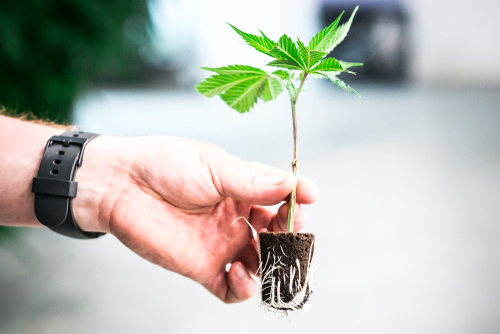Pesticide Contamination Is a Growing Cannabis Safety Concern
Marijuana’s continuing status as illegal under federal law makes the job of regulating it for consumer safety much harder.
Pesticides and herbicides have been in the news recently, with the publication of a new JAMA Internal Medicine study, which suggests that people may be able to lower their overall risk of developing cancer by more frequently eating organic foods. This was followed a few days later by the release of a report by the Environmental Working Group, an environmental advocacy group, which found that 26 of the 28 breakfast cereals and snack bars it tested had levels of an herbicide that were “higher than what [its] scientists consider protective of children’s health with an adequate margin of safety.” However, none of the foods had more than the Environmental Protection Agency’s limits for this herbicide, and the food manufacturers claim their products are safe.
These findings coincide with the conclusion of the initial public comment period for the initial stage of a Washington State Liquor and Cannabis Board (WSLCB) rulemaking process, which is designed to tighten up quality assurance testing requirements for cannabis products sold in Washington. It is hoped that these rule changes will also increase the availability of compliant products for the medical marijuana patient community. According to John Kingsbury, a member of the medical marijuana advocacy group Patients United, “There continues to be a pervasive pesticide contamination problem in Washington’s regulated cannabis market.” In an October 24, 2018 letter to the WSLCB on behalf of the group, Kingsbury said, “The size of the problem has made it a public health emergency.” Cannabis industry workers are also potentially affected.
Other industry participants seem to agree. According to a June 2015 Cannabis Safety Institute report, cannabis pesticide contamination “is an emerging public health threat” due to the plant’s high value and susceptibility to damage by molds and insects. Danielle Rosellison, president of The Cannabis Alliance, “a non-profit dedicated to the advancement of a sustainable, ethical and vital cannabis industry,” stated in a September 21, 2018 blog post, “Pesticide testing is NOT required for adult use products, making Washington the only state in the lower 48 states to have legalized adult use cannabis and not require pesticide testing. Crazy, right?”
In its May 2016 Guidance for State Medical Cannabis Testing Programs, the Association of Public Health Laboratories (APHL) says that pesticides is one of three major categories of contaminants that are targeted for testing cannabis products. The other major categories are microbiologicals and solvents, which are used to extract oils for vaporizing and for preparing tinctures and other products that are not smoked. Other types of tests may include those for toxic heavy metals such as lead, cadminum, mercury and arsenic, as well as other foreign matter such as hair.
It is worth noting the great extent to which early testing protocols borrowed from other industries. For example, according to APHL, when setting limits for permitted residual solvents allowed in extracted cannabis products, state regulatory agencies largely adopted Chapter 467 of the US Pharmacopeia’s National Formulary, which provides guidance for the use of solvents for the purpose of manufacturing pharmaceutical products. According to a May 2015 Cannabis Safety Institute report, states also looked to some food product industry microbiological safety guidelines; however, cannabis is typically consumed by inhalation, and the tobacco industry does not publish this information.
To be fair to Washington, its regulators are not alone in facing these challenges. According to the Cannabis Safety Institute, “One state after another has had to struggle with building a safe and regulated new agricultural industry.” The absence of federal guidance has exacerbated the problem of states needing to develop their own approaches to testing many cannabis products that may be consumed in several different ways — inhalation and absorption through the skin, mucous membranes and intestines – with different absorption rates, effects and potential risks. It is widely acknowledged that products with concentrated cannabinoids are especially problematic because processes that concentrate the cannabinoids will also concentrate many pesticides. Therefore, more research needs to be done; however, this is hampered by the fact that cannabis is still classified as a Schedule I substanceunder the Controlled Substances Act (21 U.S.C. §801 et seq.).
Although many consumers still assume that cannabis products are inherently safe, clearly heightened concerns are emerging about the safety of cannabis purchased in state-licensed stores. In response, Colorado and California have begun to impose stricter cannabis testing requirements. However, in a market environment of falling wholesale prices due to a glut of product, growers are complaining about the additional costs. A logical solution would be federal organic labeling, for which there would likely be a high demand. However, current federal regulations will not allow it. Therefore, Washington is moving ahead with its own organic certification programs, with the Washington State Department of Agriculture saying it is “on track” to begin certifying cannabis according to organic-like standards in early 2019. Colorado and California are likely to follow suit in the near future.

